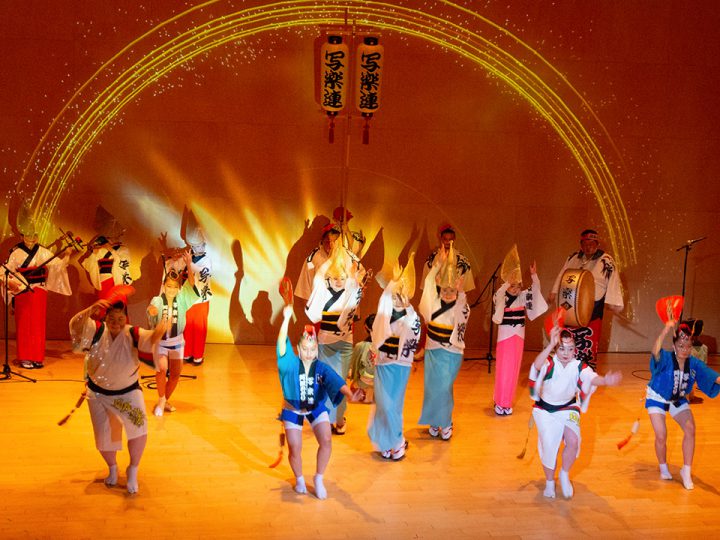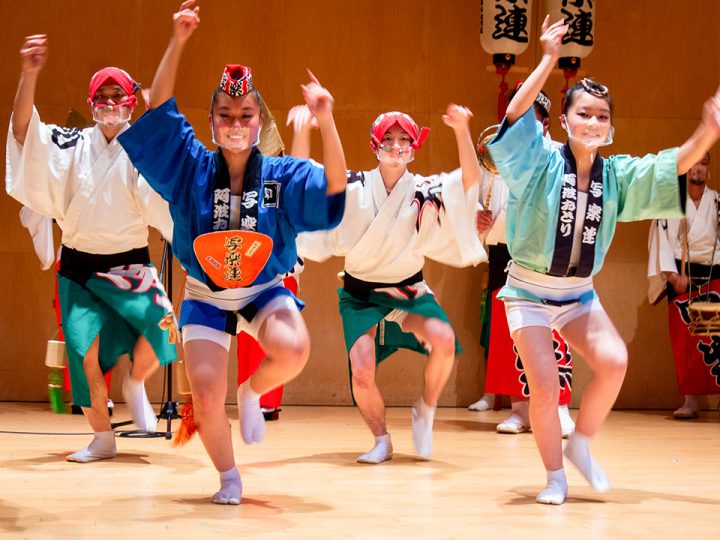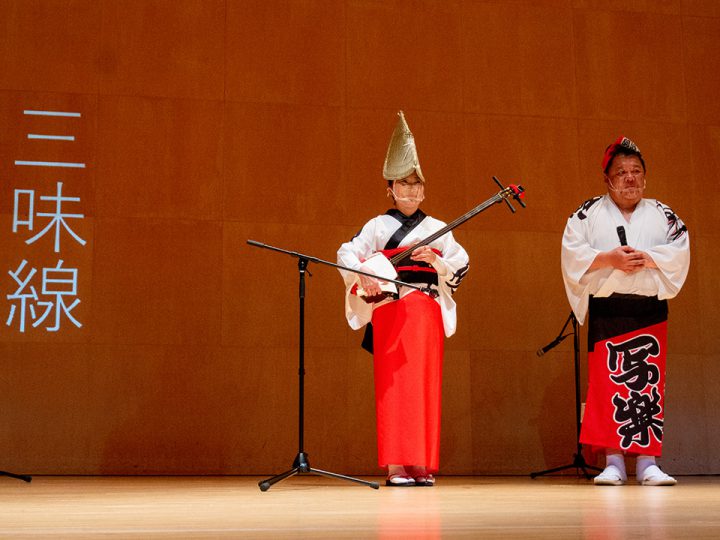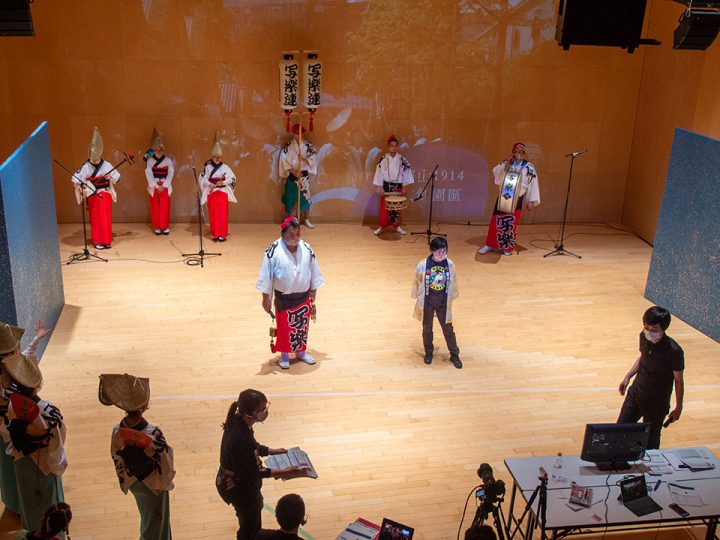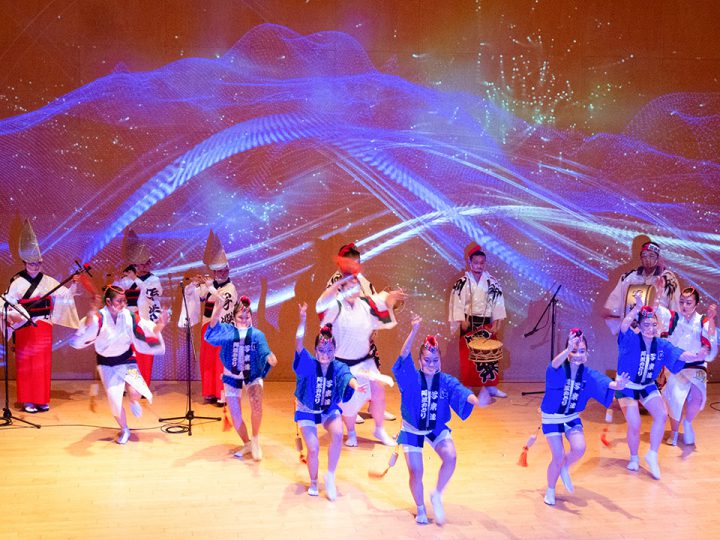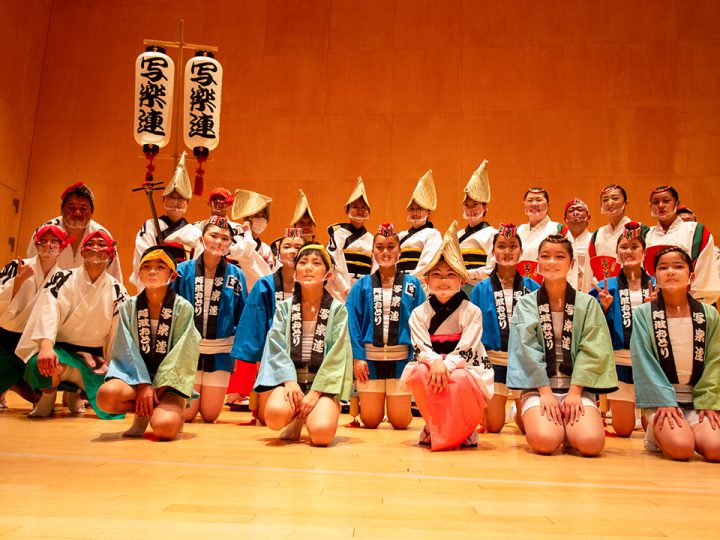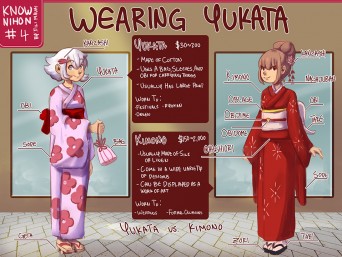- SEE & DO
- ACTIVITIES
- workshops
- DANCE WITH LIGHT: TOKYO KOENJI AWA-ODORI PLUS+
- Address:
- Za Koenji Theater (Awa-Odori Hall, B2) 2 Chome-1-2, Koenji-kita, Suginami, Tokyo
- Distance from Station:
- 5 minutes from JR Koenji Station
- Open:
- (check details)
- Website:
- http://www.koenji-awaodori.com/stage/stage04.html (external link)
- Communication:
- Depending on schedule, English and Chinese language events will be offered
- no-smoking
DANCE WITH LIGHT: TOKYO KOENJI AWA-ODORI PLUS+
Workshop Information
[updated July 2021]
Dance with Light Tokyo Koenji Awaodori Plus+
■Content: Watch a performance of the traditional Awa-Odori dance, learn about its history, and enjoy a performance with project mapping.
■Location: Za Koenji Theater, Awa-Odori Hall, B2 Level (2 Chome-1-2, Koenji-kita, Suginami, Tokyo)
■Event Date/Time: From April, the event will be held once or twice a month.
*The schedule is being finalized, please check the latest information at this website: http://www.koenji-awaodori.com/stage/stage04.html
Approximately one hour, usually 3:00pm – 4:00pm on a Saturday (reception opens at 2:50pm)
■Number of Participants: around 40 participants, registration may close if capacity is reached
■Cost: Entry fee required (please check http://www.koenji-awaodori.com/stage/stage04.html when events are announced)
■Sign up/schedule/inquiry: For schedule and ticket purchase, please use this website: http://www.koenji-awaodori.com/stage/stage04.html
For inquiries contact via email: taiken@koenji-awaodori.com
■About:
The Tokyo Koenji Awa-Odori Festival is one of the most prominent summer festivals in Tokyo held the last weekend of August every year. The festival, which attracts people from all over the city, country, and even world, was cancelled in 2020 due to the restrictions related to the spreading of Corona Virus. So, if you have missed the chance to experience Awa-Odori in the streets of Koenji or if you just miss its lively atmosphere and you would like to know more about it, we highly recommend the experience at Za Koenji. The theater is also where Awa-Odori dancers practice, so it is an authentic experience.
After being welcomed by an opening dance, you will have the chance to learn about the history, the musical instruments used (“narimono”) and their characteristics as well as about the differences between male and female dance. The event is held in Chinese and English, and videos are provided with subtitles in both languages.
This 2.0 version of the Awa-Odori Plus experience includes videos and projection mapping, displayed on the background as musicians and dancers perform, and it creates a multimedia experience, combining together music and visuals, Japanese tradition and technology.
ACCESS
YOU ALSO MIGHT LIKE:
IN THE AREA:








